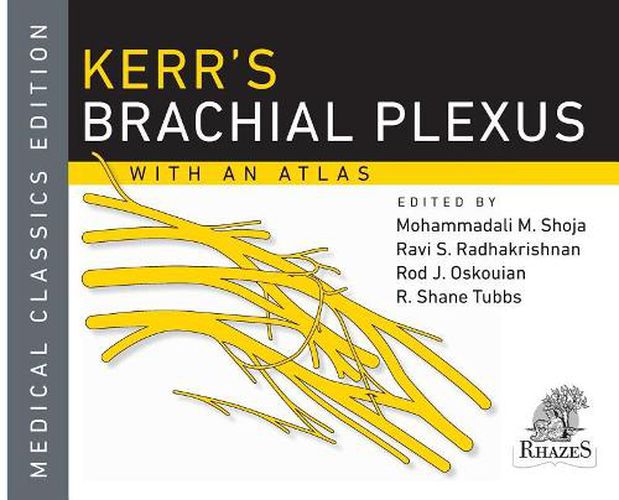Readings Newsletter
Become a Readings Member to make your shopping experience even easier.
Sign in or sign up for free!
You’re not far away from qualifying for FREE standard shipping within Australia
You’ve qualified for FREE standard shipping within Australia
The cart is loading…






This book on the nerves of the brachial plexus brings to the reader a unique resource forgotten to most anatomists and clinicians. In 1918, the anatomist Abram T. Kerr published an exhaustive thesis on variations of the brachial plexus and its branches in man. Herein, the editors have updated this 100-year-old masterpiece in regard to its terminology, language, figures, and quantitation. The end result is a current and one of a kind detailed analysis of the variants of the brachial plexus in an easy to read format that is available to a future generation of readers interested in the anatomy of the human body. The editors of Kerr’s Brachial Plexus bring a prolific experience to the project and have authored and edited multiple other books in the anatomical sciences. As a key resource to anyone studying the details of the nerves of the upper limb and specifically, their variability, Kerr’s Brachial Plexus will be a significant and must-have reference. This topic will be of interest at all levels from students to professionals. Clinically, orthopedists, rehabilitation physicians, neurologists, neurosurgeons, physical and occupational therapists, and plastic surgeons will find such a book of significant use.
$9.00 standard shipping within Australia
FREE standard shipping within Australia for orders over $100.00
Express & International shipping calculated at checkout
This book on the nerves of the brachial plexus brings to the reader a unique resource forgotten to most anatomists and clinicians. In 1918, the anatomist Abram T. Kerr published an exhaustive thesis on variations of the brachial plexus and its branches in man. Herein, the editors have updated this 100-year-old masterpiece in regard to its terminology, language, figures, and quantitation. The end result is a current and one of a kind detailed analysis of the variants of the brachial plexus in an easy to read format that is available to a future generation of readers interested in the anatomy of the human body. The editors of Kerr’s Brachial Plexus bring a prolific experience to the project and have authored and edited multiple other books in the anatomical sciences. As a key resource to anyone studying the details of the nerves of the upper limb and specifically, their variability, Kerr’s Brachial Plexus will be a significant and must-have reference. This topic will be of interest at all levels from students to professionals. Clinically, orthopedists, rehabilitation physicians, neurologists, neurosurgeons, physical and occupational therapists, and plastic surgeons will find such a book of significant use.